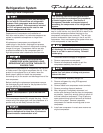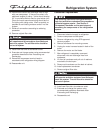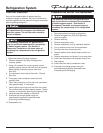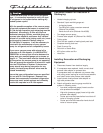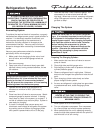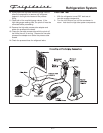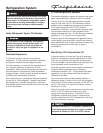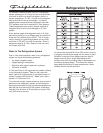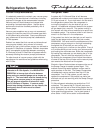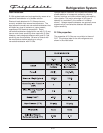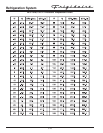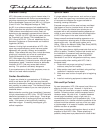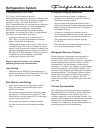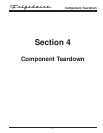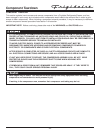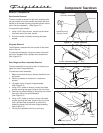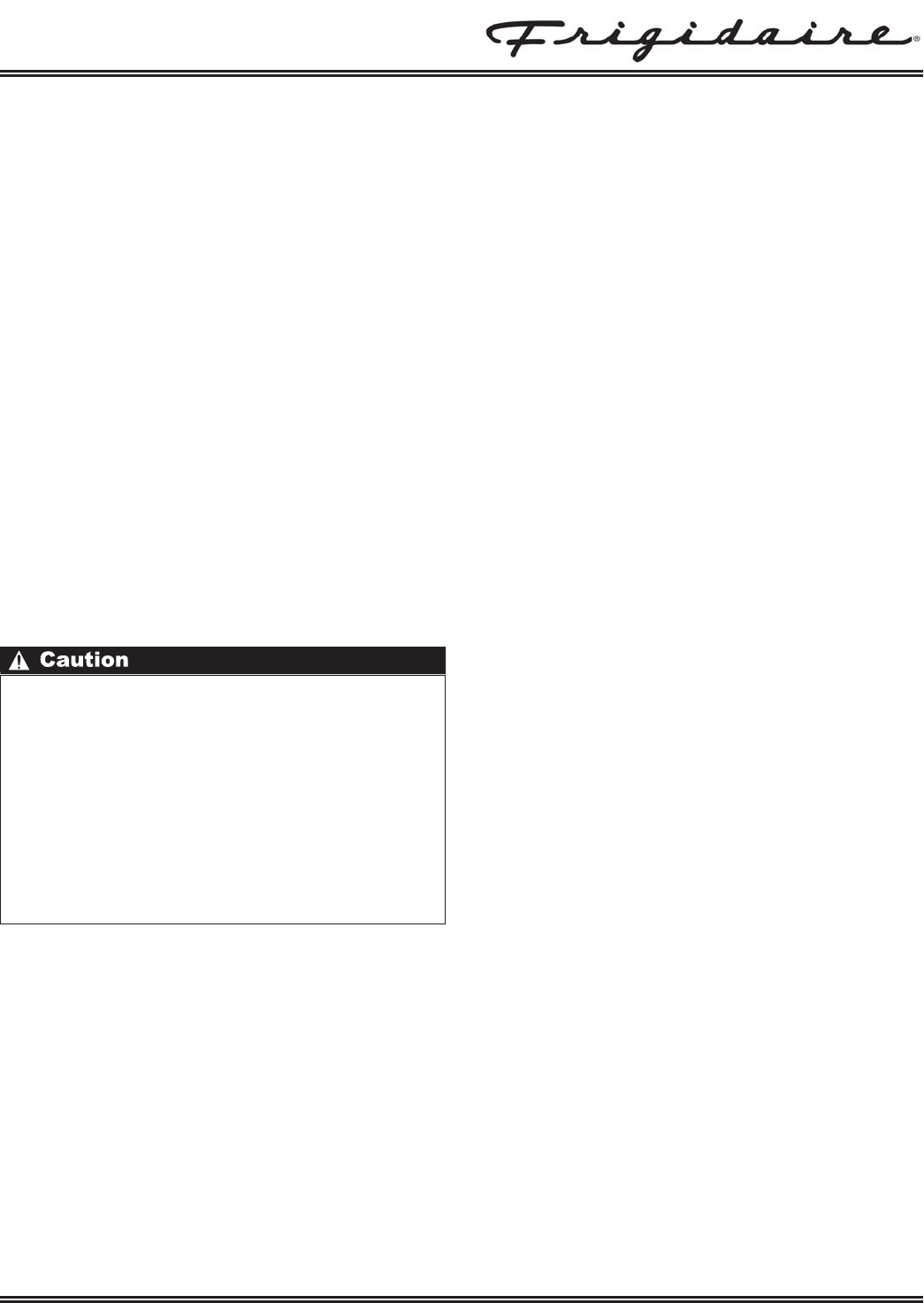
3-14
Refrigeration System
Vacuum Pump Maintenance
It is absolutely essential to maintain your vacuum pump
according to the manufacturer’s instructions including
required oil changes at the recommended intervals.
Vacuum pump oil should always be changed after
evacuating a contaminated system. Vacuum pump
performance should be checked periodically with a
micron gauge.
Vacuum pump suppliers may or may not recommend
changing the vacuum pump oil to the same type that’s
in the system being evacuated. Some manufacturers
may recommend a vacuum pump that’s dedicated to
R-134a systems.
Robinair has stated that their current and discontinued
vacuum pump models, using mineral oil currently
specified for use in their vacuum pumps, can be used to
evacuate R-134a/Ester oil systems. Robinair also states
that it is acceptable to alternate between evacuating
R-12/mineral oil and R-134a/Ester oil systems without
adversely effecting the vacuum pump’s performance.
For other brands of vacuum pumps, check with the
manufacturer for restrictions and guidelines when using
with R-134a.
Refrigerant Leaks
A system with R-134a and Ester oil will become
saturated with moisture much faster than a system with
R-12 and mineral oil. If your leak was in the low side of
the refrigeration system when the compressor is
running the pressure in the low side will go into a
vacuum. As additional refrigerant leaks out the system
will go deeper into a vacuum. The system running in
this vacuum will allow air and moisture to be pulled into
the sealed system. The moisture pulled in can then be
mixed in to the Ester oil in the compressor.
If the product has had a low side leak you will need to
install the two stage service dryer filter part number
5303918288. You must heat the crankcase area of the
compressor using a heat gun on the high heat setting
throughout the 30 minutes you are running your
vacuum pump to pull a vacuum on the system. Every 4
to 5 minutes while you are running your vacuum pump
and heating the crankcase area, shake the compressor.
By heating the crankcase you are heating the oil in the
compressor. This will drive the moisture out of the oil.
By shaking the compressor this will allow the moisture
to come to the top of the oil faster so the vacuum pump
can remove the moisture from the system.
Electrolux Home Products does not approve the use of
the Sweep Charge for sealed system repair. This
method of servicing sealed systems is often used to
repair products in the field. The Sweep Charge does
not adequately remove moisture from the oil in the
compressor. In a R-134a system you will need to
replace the compressor if the product has had a low
side leak and you are servicing with the Sweep Charge
procedure.
R-134a refrigerant molecules are smaller than R-12
molecules. This means that R-134a will pass more
minor leaks and the rate of flow will be greater than for
R-12. Therefore, it is now more important than ever to
follow good brazing practices. Use a good grade of
silver solder. A 45% silver solder is recommended.
If you use a vacuum pump with mineral oil to
evacuate an R-134a system, it is ABSOLUTELY
ESSENTIAL to have a shut-off valve between
pump and your manifold gauge set as shown on
page 4-11. The hand valve must be closed during
all times when vacuum pump is not operating.
This will prevent migration of mineral oil vapor
into R134a/Ester oil system. If vacuum pump
should stop during evacuation for any reason, the
hand pump shut-off valve must be closed
immediately.



